The most beautiful international paintings
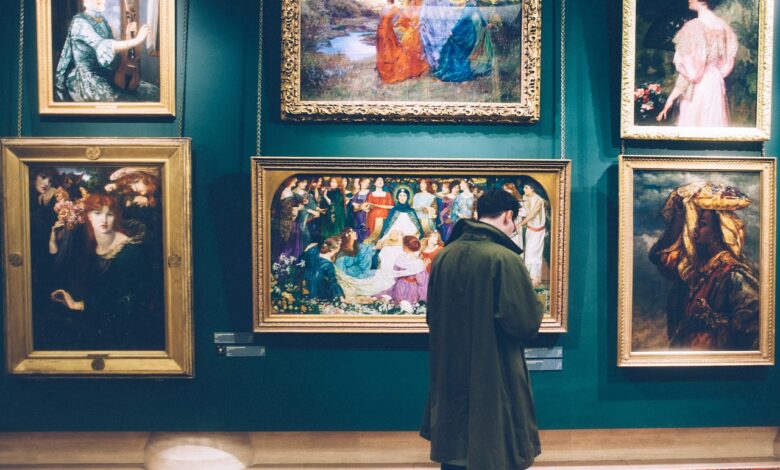
Introduction
International paintings are not merely works of art; they are globally recognized masterpieces that transcend cultural boundaries. Their acclaim stems from a confluence of factors, including:
Technical Mastery: The exceptional use of color, composition, and artistic technique allows these paintings to evoke powerful emotions in viewers.
Historical Significance: They often represent pivotal moments in artistic movements or cultural eras, offering a glimpse into the past and shaping the future of art.
Enduring Legacy: These paintings continue to resonate with viewers across generations, inspiring new interpretations and sparking conversations due to their timeless themes and execution.
While beauty remains subjective, internationally acclaimed paintings achieve a level of recognition that surpasses individual preferences. They stand as testaments to human creativity, offering a window into the soul of humanity and the power of artistic expression.
Let’s explore some world-famous paintings.
Internationally Acclaimed Paintings:
The Last Supper by Italian artist Leonardo da Vinci
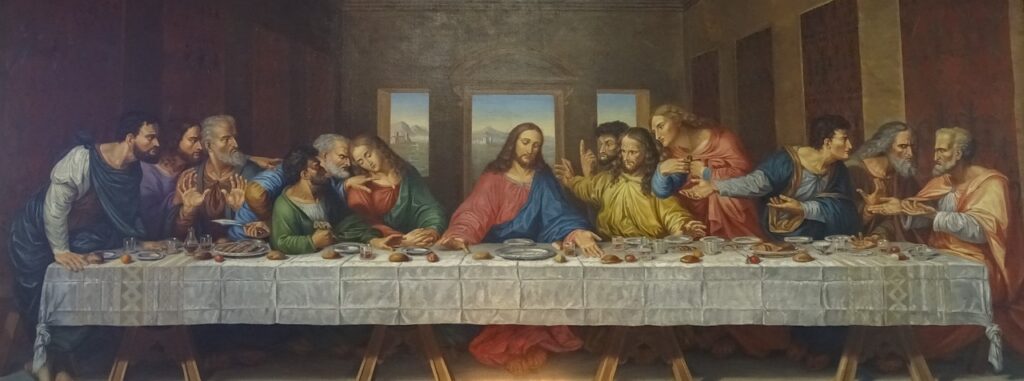
- The Last Supper is a late 15th-century mural painting housed in the refectory of the Convent of Santa Maria delle Grazie in Milan, Italy. It is one of the world’s most famous paintings.
- The work depicts the scene of the Last Supper of Jesus with his disciples, as it is told in the Gospel of John, 13:21. Leonardo has depicted the consternation that occurred among the Twelve Disciples when Jesus announced that one of them would betray him. The apostles have different reactions to the news, with various degrees of anger and shock.
- The Last Supper is a large painting, measuring 4.6 meters (15 feet) high and 8.8 meters (29 feet) wide. It was painted on a dry plaster wall using a technique called fresco. Leonardo began work on the painting in 1495 and finished it in 1498.
- The painting has been restored several times, most recently in the 1990s. The restoration revealed that the painting was in much better condition than had been thought.
- The Last Supper is a very popular tourist destination. Millions of people visit the painting each year.
- Here are some additional details about the painting:
- The painting is divided into three sections. The central section shows Jesus and his disciples. The left section shows Judas Iscariot, the disciple who will betray Jesus. The right section shows the other eleven disciples.
- The painting is full of symbolism. For example, the bread and wine on the table represent the Eucharist.
- The painting has been interpreted in many different ways. Some people see it as a depiction of the betrayal of Jesus. Others see it as a representation of the love between Jesus and his disciples.
- The Last Supper is a masterpiece of Renaissance art. It is considered one of the most important works of art in the world.
Mona Lisa by Leonardo da Vinci (1503–1505)
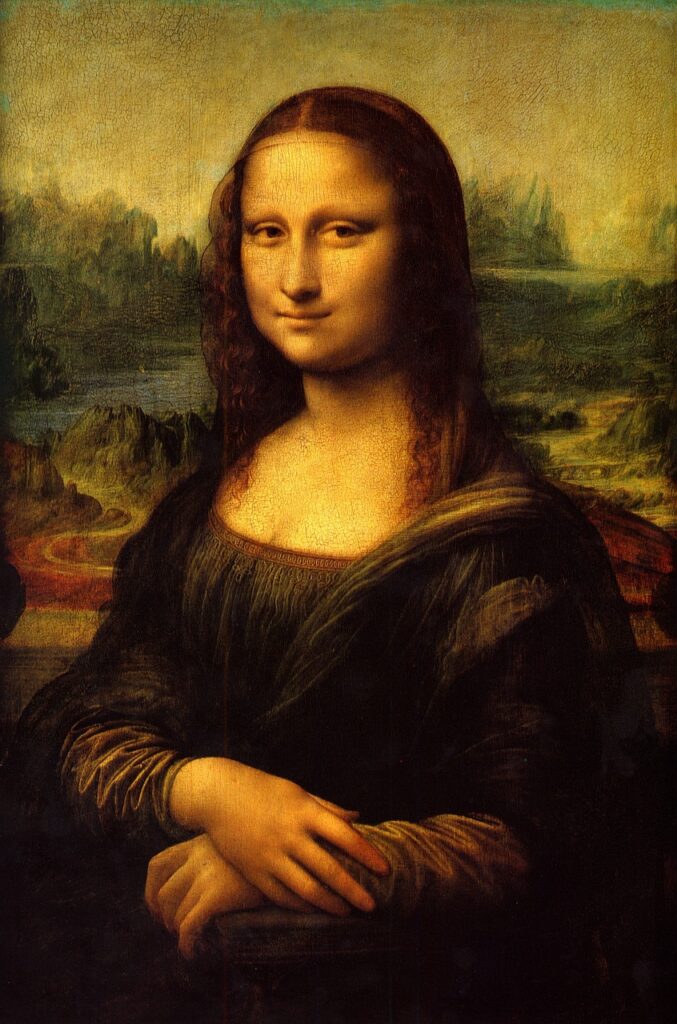
- The painting depicts a woman believed to be Lisa Gherardini, wife of Francesco del Giocondo, though her identity remains unconfirmed.
She sits upright in a three-quarter pose, showcasing her upper torso and hands. - Renaissance style: Embodies the ideals of the era with a focus on realistic portrayal and classical influences.
- Uncertain dating: believed to have been created between 1503 and 1519, with ongoing debate about the exact timeframe.
- Oil on poplar panel: Painted on a relatively small wooden panel, measuring roughly
- Height: 77 cm (30.3 inches)
- Width: 53 cm (20.9 inches)
- Visual Elements:
- Sfumato: Leonardo’s signature technique uses subtle layers of glaze to create a hazy, almost dreamlike quality. This is evident in the subtle transitions of light and shadow on her skin, clothing, and the landscape.
- Enigmatic smile: Her lips are curved in a faint, mysterious smile that has captivated viewers for centuries. Interpretations range from amusement to subtle melancholy.
- Direct gaze: Her eyes seem to follow the viewer around the room, creating a sense of intimacy and connection.
- Landscape: The background features a vast, dreamlike landscape with rolling hills, winding rivers, and distant mountains. This adds depth and contributes to the painting’s overall sense of mystery.
- Posture and attire: She sits in a “pozzetto” armchair, a low chair with armrests, reflecting a reserved and composed demeanor. Her clothing is simple yet elegant, indicative of her social status.
- Iconic status: considered a masterpiece of Renaissance art and one of the most famous paintings in the world, renowned for its technical mastery, enigmatic qualities, and enduring cultural impact.
- Overall, the Mona Lisa is a captivating portrait that transcends its subject. The subtle details, enigmatic expression, and masterful use of light and shadow create a timeless artwork that continues to intrigue and inspire viewers centuries after its creation.
The Night Watch by Rembrandt van Rijn (1642)
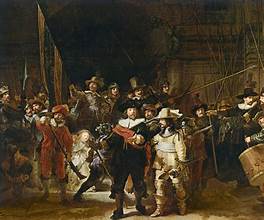
- A group portrait depicting the Amsterdam militia company of Captain Frans Banning Cocq.
- The nickname “Night Watch” arose much later due to a misinterpretation of the painting’s lighting. While the scene appears shadowed, it portrays a daytime event with a dramatic use of light and shadow to highlight specific elements within the composition.
- Key details:
- Size: A massive piece, measuring 379.5 cm x 453.5 cm (12.4 ft x 14.9 ft).
- Style: Dutch Golden Age, known for its use of light and shadow (tenebrism).
- Light: The dramatic use of light creates a dynamic scene. The main figures, Captain Frans Banning Cocq (black with a red sash) and Lieutenant Willem van Ruytenburch (yellow with a white sash), are illuminated, while others fade into shadow.
- Composition:
- Central figures lead the movement, with others spread out around them.
- Some figures face the viewer, adding a sense of engagement.
- A young girl in yellow near the front is considered symbolic of the guard’s purpose.
- Uniqueness:
- Unlike traditional static group portraits, “The Night Watch” shows the group in action, creating a sense of movement and drama.
- Only 18 of the 34 figures are actual portraits, with others serving symbolic roles.
- Context:
- Painted in 1642, during the height of Rembrandt’s career and the Dutch Golden Age.
- Commission for the Kloveniers guildhall, one of the headquarters of Amsterdam’s civic guard.
- The painting’s title, “The Night Watch,” is a misnomer stemming from an early varnish that darkened the scene.
- Overall, “The Night Watch” is a renowned masterpiece known for its:
- Dynamic composition breaks away from traditional group portraiture.
- The masterful use of light and shadow creates depth and drama.
- Historical significance: Provides a glimpse into Dutch society and the role of the civic guard.
A Journey Through the Masterpieces of Renowned Visual Artistshttps://unikesh.com/a-journey-through-the-masterpieces-of-renowned-visual-artists/
Las Meninas by Diego Velázquez (1656)
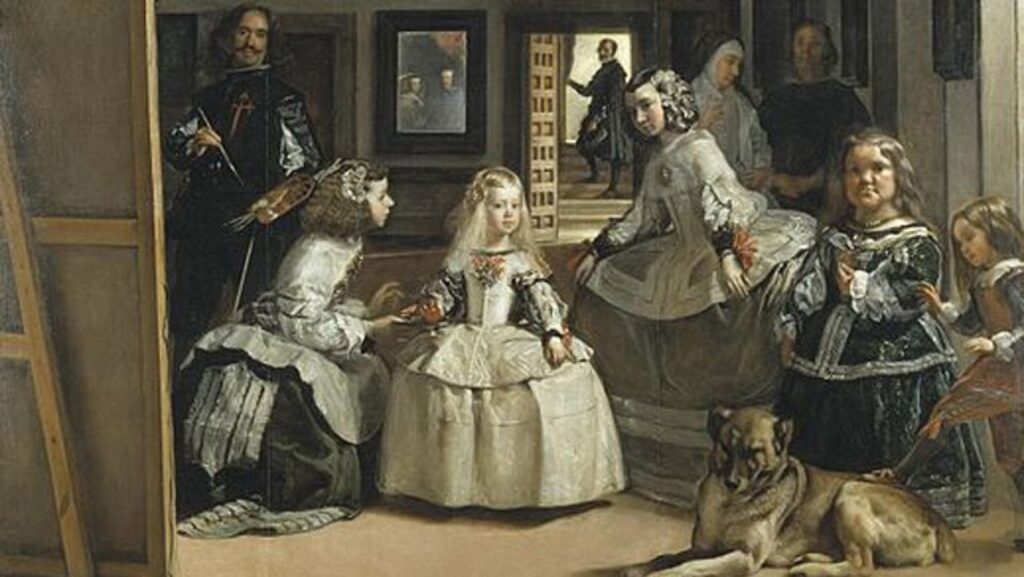
- Las Meninas, painted in 1656 by Diego Velázquez, is a complex and intriguing group portrait unlike any other. Here’s a breakdown of the scene:
- is quite a large painting. Its dimensions are:
- 318 centimeters (125.2 inches) tall
- 276 centimeters (108.7 inches) wide
- Setting:
- The painting takes place in a large, high-ceilinged room, likely Velázquez’s studio in the royal palace of King Philip IV of Spain.
- Characters:
- The central figure is the young Infanta Margaret Theresa, surrounded by her ladies-in-waiting (known as meninas in Spanish).
- Other attendants include a chaperone, a bodyguard, a dwarf, another child, and a small dog.
- Velázquez himself stands at an easel in the foreground, painting a large canvas we can’t see.
- Uniqueness:
- The painting creates a sense of mystery by blurring the lines between reality and illusion.
- Velázquez looks out of the painting towards the viewer, breaking the traditional fourth wall.
- A mirror in the background reflects the king and queen, who are presumably standing just outside the depicted scene.
- The use of perspective and the play of light and shadow create a masterpiece of illusionism.
- Overall, Las Meninas is a masterfully composed work that celebrates the art of painting itself while offering a glimpse into the Spanish royal court.
Girl with a Pearl Earring by Johannes Vermeer (1665)
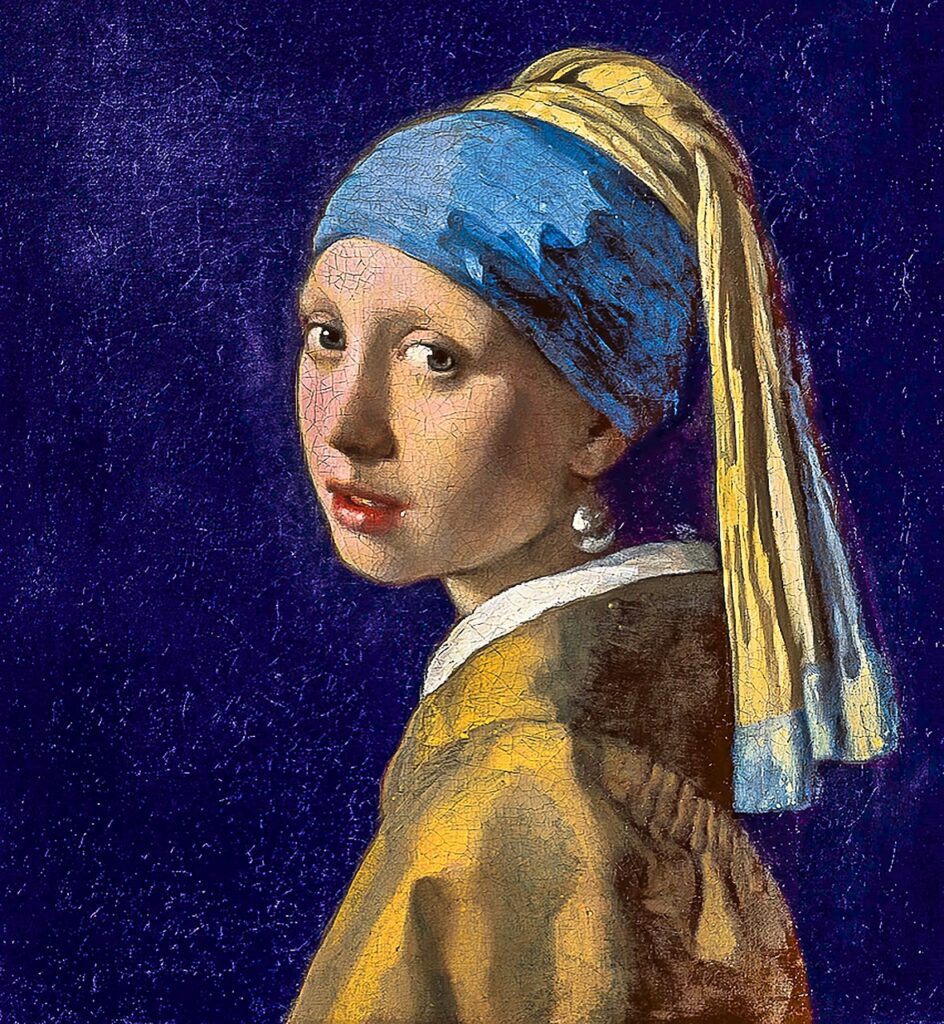
- A young woman, not a specific person but an imaginary figure, is wearing “unique attire.”.
- The style is called a “tronie” in Dutch, depicting a general type or character rather than a real person.
- The dimensionsare for a relatively small painting. Here’s its size:
- Height: 44.5 cm (17.5 inches)
- Width: 39 cm (15.35 inches)
- Appearance:
- She turns slightly, glancing over her shoulder at the viewer with a gentle expression.
- Her eyes are a soft greyish-blue with a hint of a gleam.
- Her lips are slightly parted and appear moist.
- Clothing and Accessories:
- She wears a turban made from two fabrics, one blue and one yellow.
- The most striking feature is the single, very large pearl earring hanging from her ear.
- Background:
- The background is a dark, neutral tone, most likely black, making the girl the focal point.
- Technical Aspects:
- Vermeer is known for his mastery of light, and the painting showcases his skill with subtle gradations and soft focus.
- The paint is applied smoothly, creating a realistic and luminous effect on the girl’s skin and the pearl earring.
- The painting is currently housed in the Mauritshuis Museum in The Hague, Netherlands
The Starry Night by Vincent van Gogh (1889)
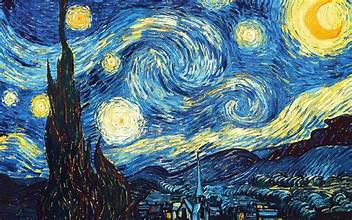
- The painting depicts a swirling nightscape dominated by a vibrant sky filled with large, expressive stars and a crescent moon.
- Below the sky lies a peaceful village nestled among rolling hills.
- The dimensions
- 73.7 centimeters (29 inches) tall
- 92.1 centimeters (36.3 inches) wide
- Sky:
- The most captivating element is the swirling sky.
- Van Gogh uses thick, textured brushstrokes in shades of blue, green, yellow, and white to create a sense of movement and energy.
- The stars are not simply dots of light but rather radiant spheres with glowing halos.
- Village:
- The cool light of the moon bathes the village, which occupies the lower third of the painting.
- Deep blues, greens, and browns coat the houses. Dark windows peek in, hinting at sleep within.
- A slender church steeple with a pointed spire pierces the night sky.
- Foreground:
- In the far foreground, a dark cypress tree with a twisting form reaches toward the heavens, creating a sense of connection between the earthly world and the celestial one.
- Overall Impression:
- The painting is not a realistic portrayal of a night scene but rather an expression of Van Gogh’s inner emotions and his awe of the universe.
- The swirling brushstrokes, vibrant colors, and contrasting light and dark create a sense of awe and mystery.
- It is one of the most famous paintings in modern culture. It depicted one of the scenes that the Dutch artist Vincent van Gogh saw from outside his window in the asylum. He painted it during the day, citing his memory of the previous night.
- This painting is located at the Museum of Modern Art in New York, USA.
Self-portrait without beard by Vincent van Gogh (1889)
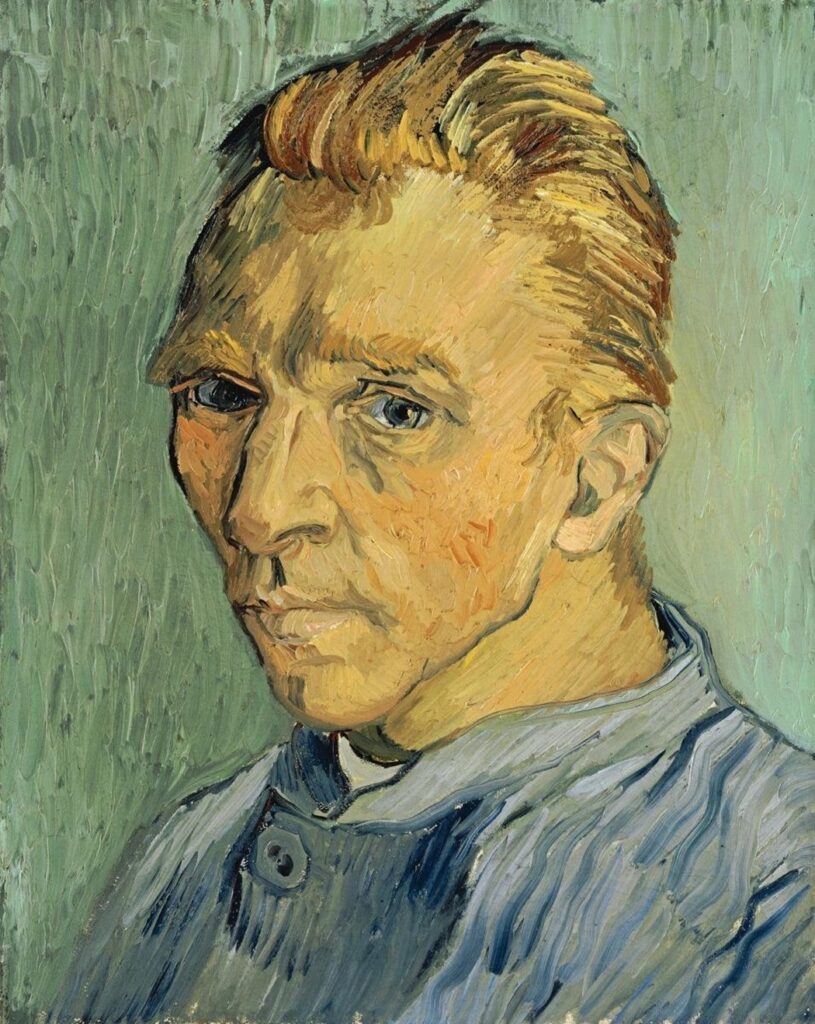
- A close-up portrait of Vincent van Gogh himself, with a gaunt face and intense expression.
- He is beardless, unlike many of his other self-portraits, which is why it’s titled “without beard.”
- The dimensions
- Height: 65 cm (25.59 inches)
- Width: 54 cm (21.26 inches)
- Appearance:
- His face is pale and drawn, with a hint of green in his skin tone.
- His eyes are large and expressive, with a hint of sadness or anxiety.
- His brushstrokes are thick and energetic, particularly in his hair and eyebrows, adding to the intensity of the portrait.
- Colors and Style:
- The color palette is bold and contrasting, with vibrant shades of green, blue, and yellow used for the background and his hair.
- The background is swirling and textured, reflecting van Gogh’s emotional state and his signature Post-Impressionist style.
- Overall Impression:
- Van Gogh himself considered this self-portrait to be one of his most raw and honest depictions.
- The intense gaze, the use of color, and the swirling brushstrokes all contribute to a sense of introspection and vulnerability.
- Some art historians believe it reflects the turmoil he was experiencing during this period of his life.
- Believed to be his last self-portrait,
- Sold for $71.5 million in 1998, the painting is considered one of the most expensive of all time.
The Scream by Edvard Munch (1893)

- Central Figure:
- The focal point is a skeletal figure with an elongated head, screaming with its mouth wide open.
- The figure desperately clamps its hands over its ears, as if to block out the sound of the scream
- The expression on its face is one of pure terror and anguish.
- The dimensions
- Height: 91 cm (35.75 inches)
- Width: 73.5 cm (29 inches)
- Color and Landscape:
- The background is a swirling landscape of vibrant, unnatural colors.
- The dominant colors are blood red, orange, and streaks of green and blue in the sky.
- These colors create a sense of unease and anxiety, reflecting the emotional state of the central figure.
- Overall Impression:
- Edvard Munch created “The Scream” not as a realistic depiction of a scene but as a powerful expression of human emotions like existential dread, anxiety, and despair.
- The distorted figure, the unnatural colors, and the swirling lines all contribute to a sense of isolation and vulnerability.
- Additional Notes:
- Munch created multiple versions of “The Scream” using different mediums like oil paint, tempera, and pastel.
- The painting is considered a cornerstone of expressionism, an art movement that emphasized the expression of emotions over realistic portrayal.
- This painting has two main locations it resides in:
Munch Museum (MUNCH) in Oslo, Norway: This museum holds several versions of “The Scream,” including a painting, a drawing, and a print. They typically have one version on display at all times, while the others are kept in secure storage for preservation purposes.
National Museum of Norway in Oslo, Norway: This museum also holds another version of “The Scream” in its collection.
It’s important to note that, due to its immense value and past theft attempts, “The Scream” is not always on public display and may be undergoing restoration or special exhibitions. If you’re planning a trip to see “The Scream” in person, it’s a good idea to check the museums’ websites for the most up-to-date information on which location currently has it displayed and its visibility status.
The Persistence of Memory by Salvador Dalí (1931)
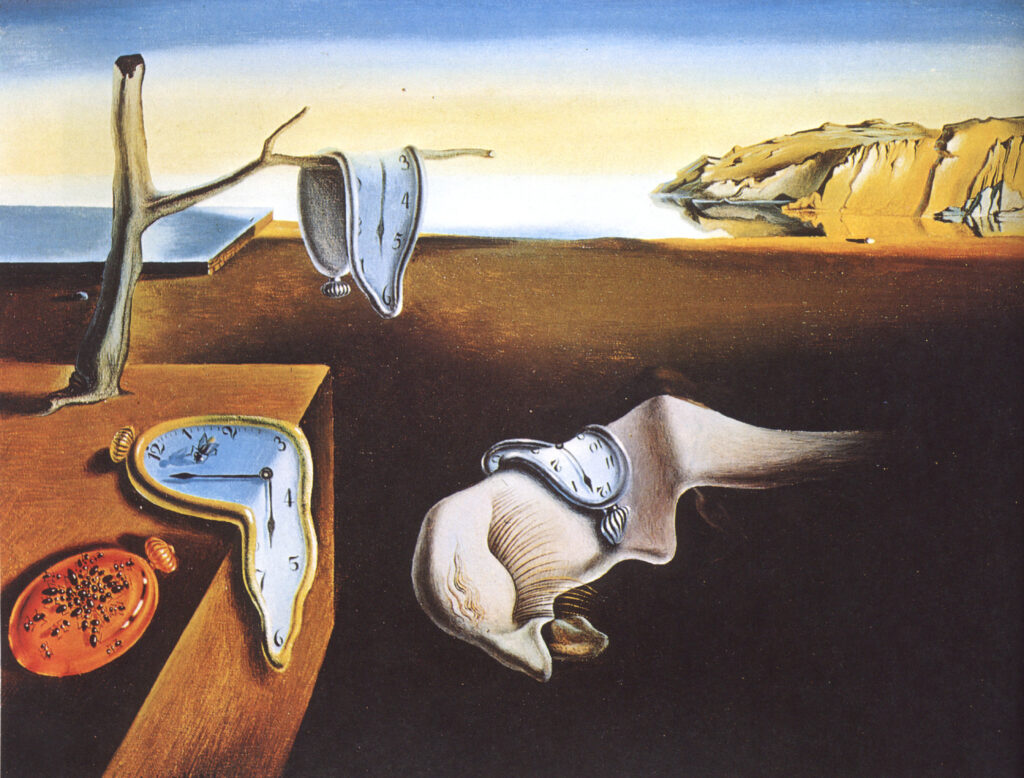
- The most striking element is a group of melting clocks. These clocks are not dripping like liquid, but rather are soft and drooping over themselves, defying the normal perception of time.
- The dimensions
- Height: 24 cm (9.45 inches)
- Width: 33 cm (13 inches)
- Setting:
- The clocks rest on a barren, rocky landscape bathed in an orange twilight sky.
- In the distance, a calm sea stretches out.
- The setting creates a dreamlike and surreal atmosphere.
- Other Details:
- A distorted human face with long eyelashes rests on the top of one of the clocks.
- Ants crawl over another clock on the ground, symbolizing decay.
- Flies may also be present in some versions, further emphasizing the passage of time.
- Interpretation:
- The melting clocks are the most famous symbol in the painting. They represent the relativity of time and how it can feel distorted in dreams or under the influence of the subconscious.
- The barren landscape and the distorted face add to the dreamlike quality and suggest a space beyond the constraints of normal reality.
- The ants and flies symbolize decay and mortality, further emphasizing the passage of time.
- Overall Impression
- “The Persistence of Memory” is a captivating and thought-provoking painting that challenges our perception of time and reality.
- It is a key example of Surrealism, an art movement that aimed to depict the subconscious mind through dreamlike imagery.
- This painting is located at the Museum of Modern Art (MoMA) in New York City.
Guernica by Pablo Picasso (1937)
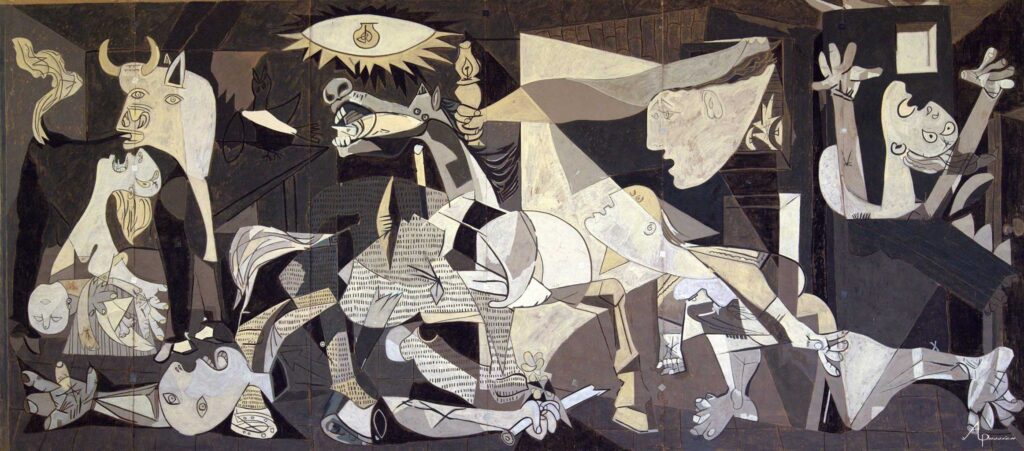
- Guernica, painted by Pablo Picasso in 1937, is a powerful and disturbing portrayal of the bombing of Guernica, a Basque town in northern Spain, by Nazi Germany and Fascist Italy during the Spanish Civil War.
Here’s a breakdown of the key elements: - The dimensions
- 3.49 meters (11 feet, 5 inches) tall
- 7.76 meters (25 feet, 6 inches) across
- Subject:
- The scene depicts the aftermath of the bombing, a chaotic and nightmarish landscape filled with suffering and death.
- Central Figures:
- A screaming woman clutching a dead child is a central image, symbolizing the horror and grief of innocent civilians.
- A gored horse rears up in agony, representing the brutality of war.
- A bull with a human face, interpreted in various ways, could symbolize fascism or blind violence.
- Overall Tone:
- The painting is executed in shades of grey, black, and white, emphasizing the starkness and tragedy of the event.
- Distorted figures and fragmented shapes create a sense of chaos and urgency.
- The use of light and shadow emphasizes drama and highlights the suffering figures.
- Historical Context:
- Created as a response to a real-world event, Guernica is a powerful anti-war statement.
- Picasso intended the painting to be a universal symbol of the devastation of war on innocent people.
- Legacy:
- Pablo Picasso’s Guernica ranks as one of his most important works and among the most powerful anti-war paintings in history.
- It continues to serve as a reminder of the human cost of war and the importance of peace.
- This painting is on display at the Museo Reina Sofía in Madrid, Spain.
Conclusion
Beauty is subjective, so what one person considers the most beautiful painting in the world may not be the same for another. But what these iconic works share is their ability to spark emotions, ignite conversations, and leave a lasting impression. They transcend personal preference, becoming cultural touchstones that invite us to delve deeper into the world of art, history, and the human experience.

